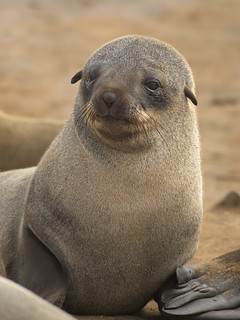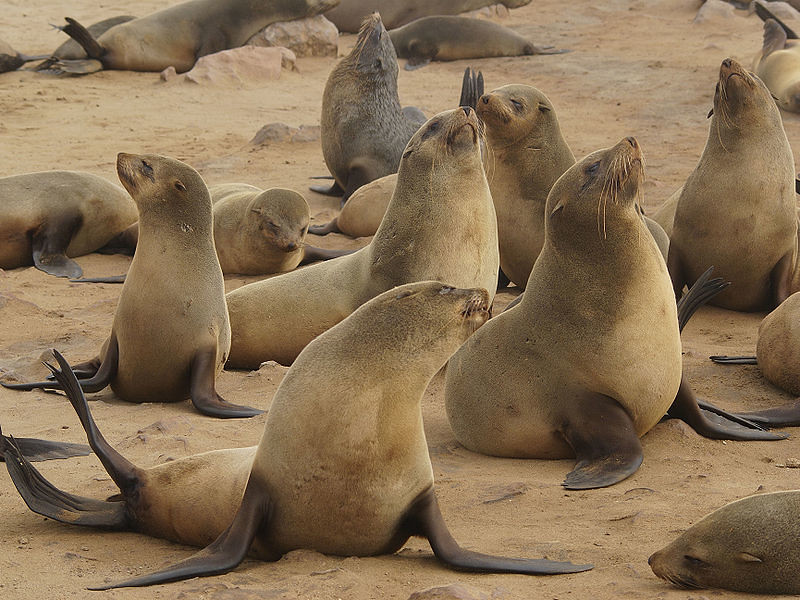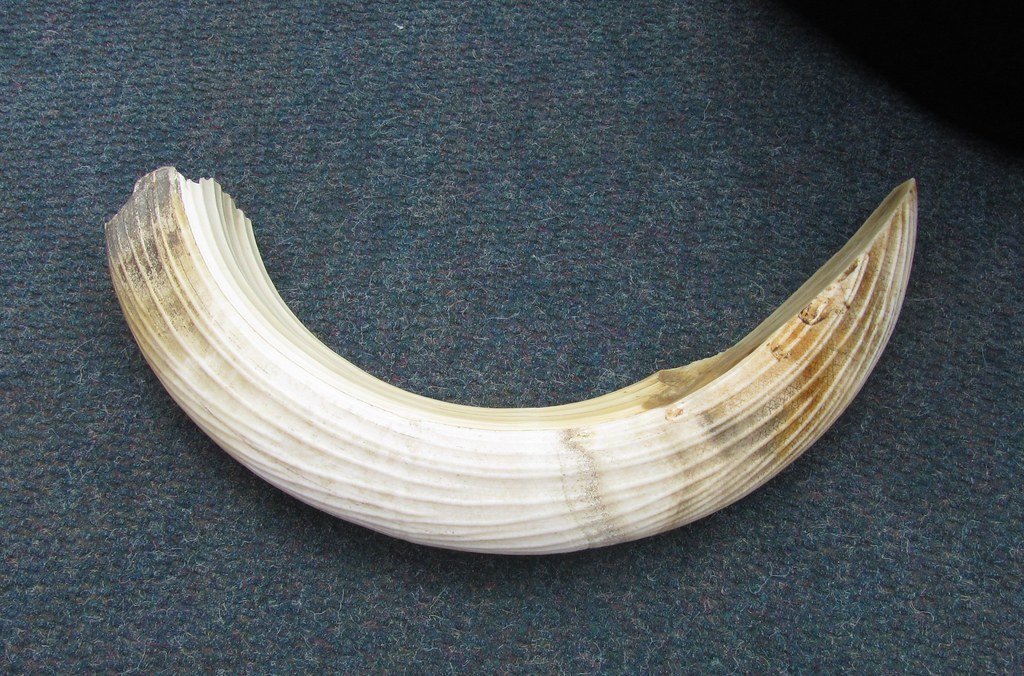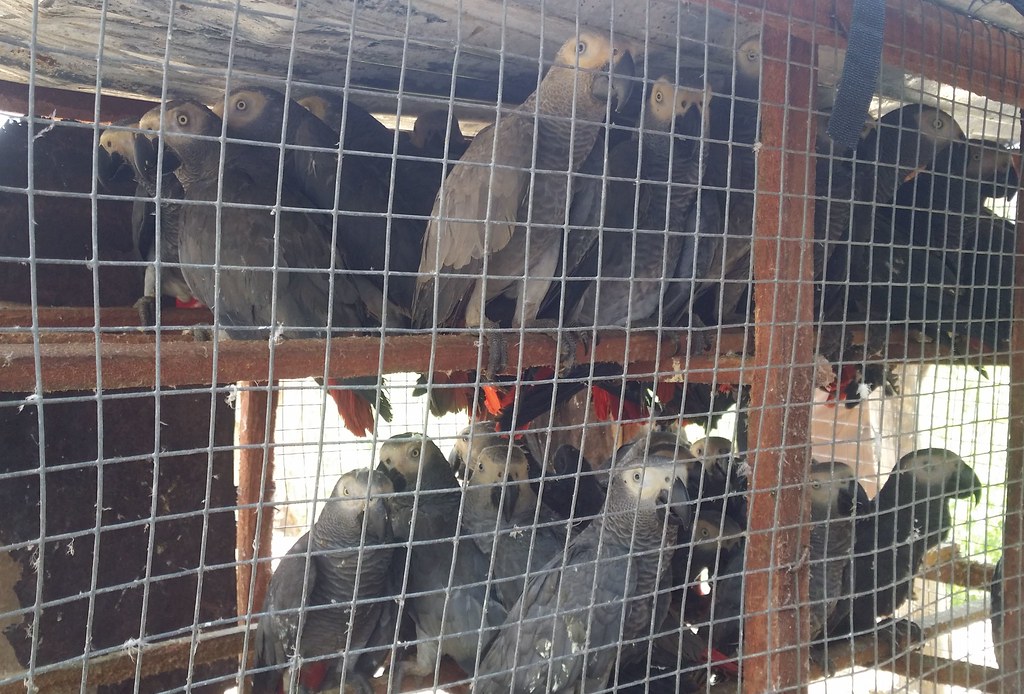系級:法一D
姓名:翁鈺智
學號:06141425
十年屠殺 東亞合法野生物市場正在掏空非洲
摘譯自2018年3月15日ENS南非,開普敦報導
不止非法盜獵,亞洲的合法出口市場也正在掏空非洲生態!野生物貿易研究委員會(TRAFFIC)最新報告指出,非洲每年出口數千噸活體、骨、皮和肉類到亞洲,而且這個趨勢目前看不到盡頭。
根據最近十年有紀錄的「瀕危物種國際貿易公約」(CITES)貿易資料,從2006年到2015年,約有140萬隻受管制的活體動植物、150萬件毛皮和200萬公斤肉類,從41個非洲國家合法出口到17個東亞和東南亞國家。
看不到盡頭! 非洲野生物合法出口至東亞
談到非洲野生動物貿易,焦點主要集中在非法貿易以及大象和犀牛等代表性物種的大規模盜獵活動上,合法野生動物貿易較少受到關注。然而,TRAFFIC最新報告〈一路向東 - 從非洲到東亞及東南亞的CITES動植物出口分析〉指出,東亞市場正大量掠奪非洲野生動物,而且出口量不斷增加。
這些出口的物種包括來自CITES附錄I(最瀕危的物種)或附錄II(目前並無滅絕之威脅但需要密切監控貿易情況之物種)的975個不同物種。
南非是活禽、哺乳動物和植物的最大出口國。截至目前為止,納米比亞是最大的哺乳動物皮毛出口國,主要是軟毛海豹毛皮,大多數賣往新加坡和香港。

出口量第二大的哺乳動物皮是象皮,總計1萬1285件來自辛巴威(8744件)和南非(2533件)。
數量最龐大的出口皮革是尼羅河鱷魚皮,超過140萬。
200多萬公斤的肉類出口大部分來自三種動物——尼羅河鱷魚、歐洲鰻魚和軟毛海豹。最大的爬行動物肉進口國是香港。
另外,從一項詭異的野生動物商品可一窺屠殺的規模——短短十年內,烏干達和坦尚尼亞出口超過50噸的河馬牙齒到亞洲。
現貨交易主要商品是兩種很少受到關注的物種——豹龜和球蟒。活體動物的主要進口國是日本、新加坡和香港。這些國家和中國是毛皮進口大國,新加坡和韓國則是主要的肉品進口國。
鳥類出口屬非洲灰鸚鵡最常見
野生動物貿易中最常見的鳥類是非洲灰鸚鵡,2006年至2015年期間南非出口4萬475隻,剛果民主共和國出口3萬4283隻。
2017年,非洲灰鸚鵡被列入CITES附錄I,不允許國際貿易,但包括剛果民主共和國在內的多個締約國對禁令提出了保留意見。
由於某種原因,2013年突然出現大量的費沙氏情侶鸚鵡出口,共6萬5315隻銷往亞洲。這種鳥原生地是坦尚尼亞,但所有出口都來自南非的圈養鳥園。
報告檢視的這十年期間,木材是其中一項出口大宗,總量達1000萬平方公尺,其中大部分來自原始森林,最終也是銷往東方。木材種類大部分是非洲柚木,超過900萬平方公尺的木材來自剛果民主共和國脆弱的雨林。
合法市場掩蓋非法 交易數量被低估
根據這份報告,非洲大陸實際上的出口數量可能不止於此。報告指出,「並非所有在CITES貿易資料庫中的交易都是合法的,這是公認的事實。例如採伐數量很可能超過國家限額,或是野外採伐偽裝成人工飼養。」
「這類製品可能佔報告總貿易量中很高的比例。此外,許多物種最近才被列入CITES,因此在2006至2015年的貿易資料審查中看不出龐大數量或根本沒有出現。」報告寫到。
「在這項分析中,鯊魚和鬼蝠魟產品的出口並不顯眼。雖然許多鯊魚和鬼蝠魟物種被列入CoP16(2013),但CoP16在2014年9月才生效,締約方要到生效時才會報告交易。」
對於列入CoP17(2016)的所有物種,包括鯊魚、魟和木材物種如黃檀木,要到2017年管制才生效。
【研究報告的重要發現】※整理:東亞野生物貿易研究委員會
- 共有41個非洲國家出口CITES附錄野生動植物至17個亞洲國家/地區
- 從2006年開始,活體野生動植物的出口有逐漸增加的趨勢,其中人工繁殖來源的比例從2006年的42%增加至2013年的66%,達到高峰
- 某些貿易量大的物種在CITES公約中並沒有得到足夠的關注,特別是豹紋陸龜跟球蟒
- 南非是活體鳥類、哺乳類和植物的最大輸出國
- 納米比亞是哺乳類皮製品的最大輸出國,主要來自南非海狗
- 自非洲出口的動物皮有91%(141萬8487件)以上來自尼羅鱷
- 出口量排名第二的哺乳動物皮為非洲象, 1萬1285件,主要來自辛巴威跟南非
- 馬達加斯加是唯一有出口活體兩棲動物到亞洲的國家
- 日本是活體兩棲及節肢動物的最大進口國
- 新加坡進口最多的活體鳥類
- 香港在活體爬蟲類的進口上佔有重要地位,大部分是豹紋陸龜及球蟒
- 辛巴威是爬蟲類皮的最大輸出國,排名第二的是尚比亞
- 只有三個動物物種的肉有申報出口的紀錄:尼羅鱷、歐洲鰻及南非海狗
- 南韓是歐洲鰻的最大進口國,香港排名第二
- 烏干達和坦桑尼亞出口50多公噸的河馬牙。近年來馬拉威成為重要的河馬牙出口國
- 2015年起,肯亞及坦尚尼亞突然開始出口活體絲葦(一種仙人掌)及同屬中其他仙人掌物種(4萬4575個標本)
Legal East Asian Markets Are Gutting Africa’s Wildlife
Quite apart from the decimation of illegal poaching, legal export to Asian markets is tearing the wild heart out of Africa. Each year thousands of tonnes of live animals, bones, skins and meat head East in a plunder with no end in sight.
The scale at which Africa’s wildlife is being drained by Eastern market demand is enormous, according to a new report by the wildlife monitoring network TRAFFIC based in the UK.
The focus on wildlife trade from Africa generally centers on the illegal trade and the massive poaching of iconic species such as elephants and rhinos. Comparatively little attention has been given to legal wildlife trade from the continent.
According to TRAFFIC, between 2006 and 2015, almost 1.4 million live animals and plants, 1.5 million skins and two million kilograms of meat from species listed by the Convention on International Trade in Endangered Species, CITES, were legally exported from 41 African countries to 17 countries in East and Southeast Asia.
The report, “Eastward Bound – Analysis of CITES-listed flora and fauna export from Africa to East and Southeast Asia” warns that these export volumes are huge and escalating.
South Africa proved to be the largest seller of live birds, mammals and plants. Namibia was, by far, the greatest exporter of mammal skins – mainly those of Cape fur seals – most going to Singapore and Hong Kong.
The second most common mammal skin exported was from elephants, with 11,285 sold from Zimbabwe (8,744) and South Africa (2,533).
The greatest overall number of skins exported, however, were from Nile crocodiles – over 1.4 million.
Over two million kilograms of meat was also exported, most of it being from just three species: Nile crocodile, European eel and Cape fur seal. The largest importer of reptile meat was Hong Kong.
The scale of killing can be guaged by one seemingly bizarre export. In just 10 years, more than 50 tonnes of hippo teeth were marketed to the East from Uganda and Tanzania.
Live trade was dominated by two species which generally receive little attention: leopard tortoises and ball pythons. Importers of live animals were predominantly Japan, Singapore and Hong Kong. These and mainland China dominated skin imports, and Singapore plus the Republic of Korea were the main meat importers.
The most commonly exported birds were African grey parrots, with 40,475 leaving South Africa between 2006 and 2015 and 34,283 from the Democratic Republic of Congo, DRC.
In 2017, the African grey parrot was uplisted to CITES Appendix 1, where international trade is not allowed, but several parties, including the DRC, took out a reservation against the ban.
For some reason, there was a run on Fischer’s lovebird in 2013, with 65,315 heading for Asia. Although the bird is native to Tanzania, all exports were from captive sources in South Africa.
During the 10-year period under review, a major export was wood, with 10-million square meters – much of it from virgin forest – bound for the East. Most of this was driven by exports of African teak, more than nine million square meters coming from the DRC’s fragile rain forests.
It is likely, according to the report, that these overall export numbers are low in terms of what actually leaves the African continent.
“It is recognised,” reads the report, “that not all trade reported in the CITES Trade Database was sourced legally. For example, specimens may have been taken which exceeded national harvesting quotas, or taken from the wild and falsely claimed to be captive-bred.”
“It is possible that such specimens make up a significant proportion of total trade reported. Also many species were only recently listed in CITES, so will not appear in this review of trade data for 2006 to 2015 in large amounts or at all,” the report states.
“Exports of shark and manta ray products do not feature highly in this analysis. Although many were listed at CoP16 (2013), the listings did not go into effect until September 2014 and therefore Parties will not have reported trade until then.”
For all of the species listed at CoP17 (2016), including sharks, rays and timber species such as Dalbergia, restrictions did not enter into effect until 2017.
心得:
許許多多的物種被人類做以斂財的工具,但自古皆然,是非對錯無一標準,但就瀕臨絕種的保育動物,以及其衍生出的永續資源問題,我們應該重視之,但方法絕對不是僅就頒布一項法令,便要求國家及百姓去遵守,應當找出為何他們要如此大量地獵捕動物,忽略保育的原因,是否是貧窮使然等等因素,國際社會亦非對此獵捕行為加以譴責,若不是資源分配問題,若不是國際互助問題,若不是黑市炒作,百姓何以不與當地物種和平共存,以上。



沒有留言:
張貼留言